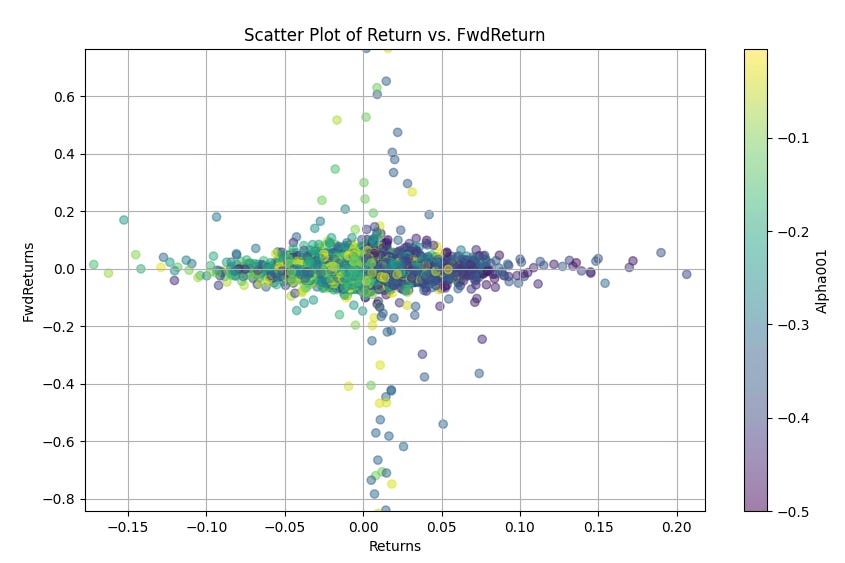“There are two kinds of people in this world: Those seeking happiness, and bullfighters.” by Zura Kakushadze
This quote by the author is written in the beginning of the document “101 Formulaic Alphas'“ by Zura Kakushadze. This document contains a list of 101 real Alpha Factors, most of which are actually currently used in production.
A quote from the paper:
“We emphasize that the 101 alphas we present here are not “toy” alphas but real-life trading alphas used in production. In fact, 80 of these alphas are in production as of this writing.”
In this post we are going to dive into what Alpha Factors are and will go over actually using one of them in a Python script.
This story is solely for general information purposes, and should not be relied upon for trading recommendations or financial advice. Source code and information is provided for educational purposes only, and should not be relied upon to make an investment decision. Please review my full cautionary guidance before continuing.
What are Alpha Factors?
Alpha represents the excess return of an investment relative to a benchmark index. It's an indication of the active return on an investment, meaning the performance due to specific skills or the strategy of the manager.
Alpha Factors refer to any set of predictive signals or models used to predict future returns of a security. So Alpha Factors are the components or drivers that a model might use to generate or predict ‘alpha’.
These factors aim to capture systematic sources of return. By combining multiple alpha factors, quants can develop a comprehensive investment strategy that aims to outperform the market consistently.
Here are the main types of Alpha Factors:
Fundamental Factors
These are factored derived from financial statements and are used to assess the health and performance of a company, e.g. P/E ratio, earnings growth, dividend yield.
Technical Factors
These are based on past market and security price movement, e.g. moving average crossovers, price momentum, technical indicators.
Sentiment Factors
These gauge the mood or sentiment of investors based on various sources of information, e.g. news sentiment analysis, social media sentiment indicators, analyst ratings.
Macro Factors
These factors are broader economic and geopolitical indicators, e.g. interest rates, inflations rates, economic growth rates.
Alternative Data Factors
These are non-traditional data sources, e.g. Satellite imagery, web traffic analysis, bockchain transactions.
Custom Factors
These are proprietary factors developed by individual researchers or firms. They are typically kept confidential to maintain a competitive edge.



